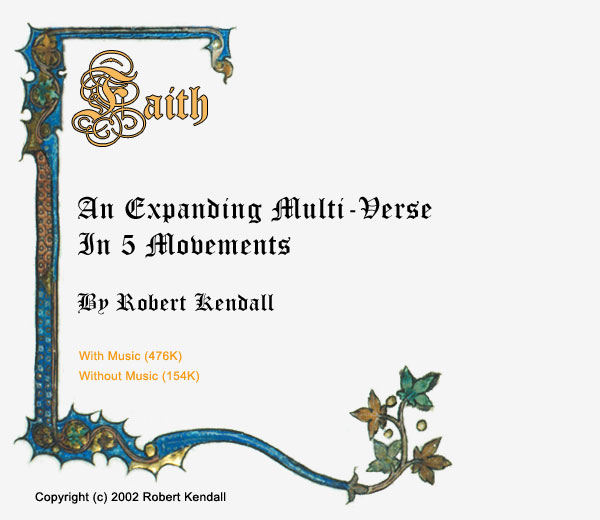Kinetics and Sound in Digital Literature

Kinetics and sound effect the reading of digital poetry and add more dimension through immersion and deeper engagement with the text. The use of transient text along with a soundtrack allows the reader to enjoy a more immersive experience which can call into question the parameters of meaningful literature.
Faith, by Robert Kendall, uses both of these features to create an enhanced, interactive poem. Described as “an expanded multiverse in five movements” and drawing on parallels with classical music which is considered to be high culture [Raymond Williams, A Vocabulary of Culture and Society, 1983], this is arguably done with the intention of calling into question the validity of the terms high and low culture. Regardless of the intention, the movements are separated through the movement of transient text, often in time with the music. Each of these movements, or nodes, re-arranges and adds to the current text to create new sentences. There are also small pauses within each movement in which the text creates smaller, yet still meaningful sentences. Humans naturally attempt to read and understand any text placed before them, the lack of time limits the possibility of doing so in this case. These small pauses in which the original text has been reworked to hold a different meaning are a small imitation of the overall text.
The first movement involves the text falling into frame, most prominently the work ‘logic’ fading out entirely multiple times. All this takes place in time with the music, enhancing the reading experience by creating a more immersive poem. Unlike traditional concrete poetry the readers must stay engaged with the text throughout the entire movement, meaning will be lost if they do not. Though, this immersive experience, during which the reader has no control over the text they are reading is broken up at the end of each movement. The text would stay indefinitely at the end of one movement until the reader clicks the link to continue onto the next node.
By forcing the reader to interact with the text on a level comparable to that of concrete literature the parallels between the two is highlighted. Despite the subtitle of a “Multiverse in five movements” comparing the text to classical music, this text is, at its core, poetry with the added dimension of music and interactivity. By doing this Kendall has begun to blur the lines between the two art forms and questions the meaningfulness of literature that diverges from the traditional forms.


